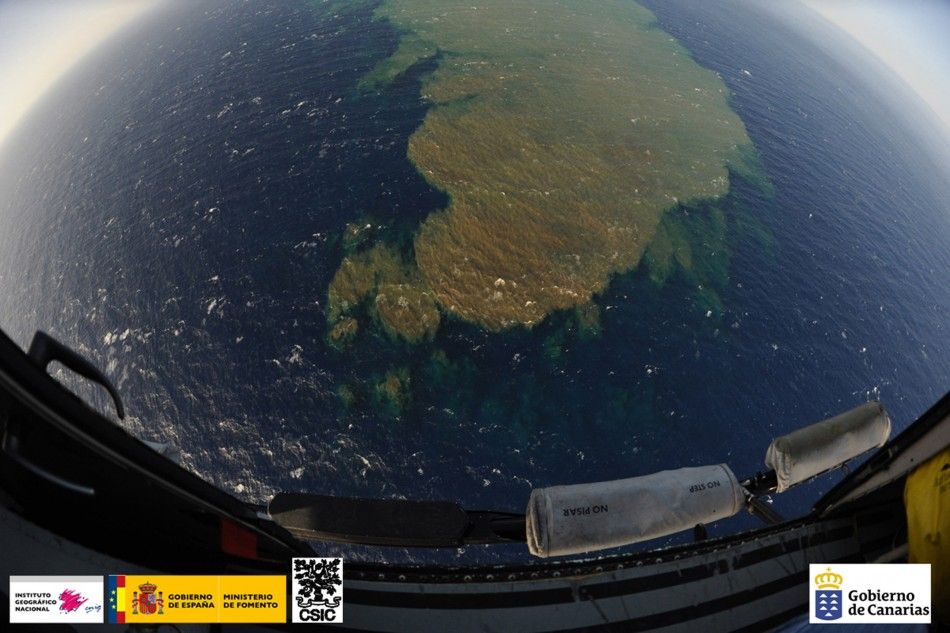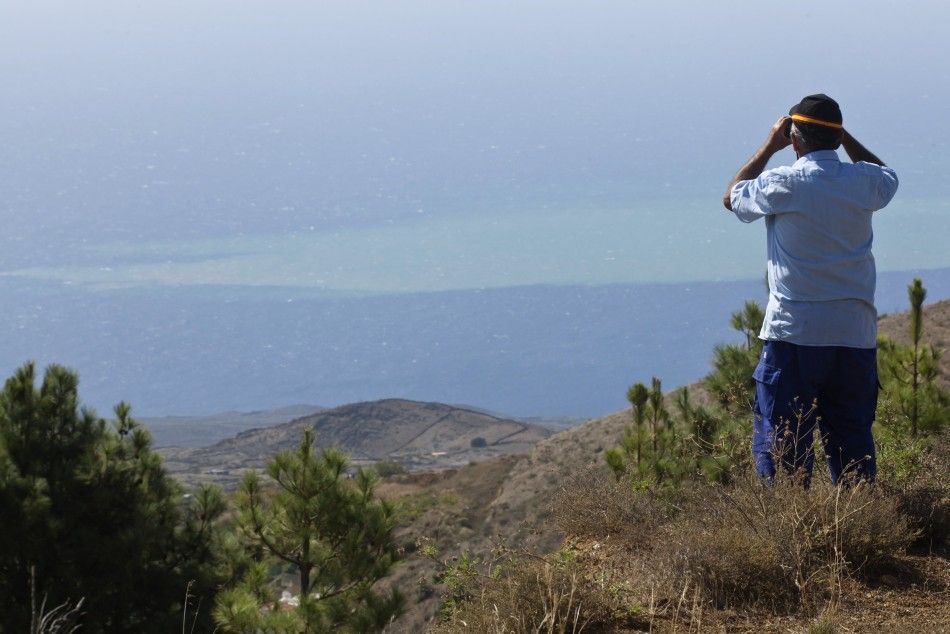Volcanic Eruption in Canary Islands Produces Large Sea Stains [PHOTOS]
The underwater volcanic eruptions that began on Monday are continuing off the coast of the Canary Island of El Hierro.
On Tuesday, over 600 people in the southernmost town of La Restinga were evacuated from their homes. They remained out of their homes on Friday as scientists continued to assess the situation.
As the photos below show, two large green stains are now visible on the surface of Las Calmas Sea. In addition to the stains, officials at Spain's Instituto Geografico Nacional (IGN) report a strong smell of sulfur and the presence of dead fish floating on the surface. Scientists said the fish were likely killed by gas escaping from the subsea volcano.
IGN confirms that the large stains come from two fissures on the sea bed, approximately 2,000 - 3,000 feet below the surface. The fissures are located less than 2.3 miles and 1.7 miles from the town of La Restinga. While they remain cautious, the hope is that these eruptions have eased some of the pressure and potential for eruptive activity occurring near the island.
El Hierro, the smallest of the Canaries, has experienced over 10,000 earthquakes since July 19, a signal that magma is rising toward the Earth's surface. The majority of the earthquake activity shifted from El Golfo in the island's northwest to beneath the Las Calmas Sea in the south earlier this month.
Because the eruptions eased pressure in the area, further evacuations were unlikely. Within the past 48 hours, the number of earthquakes has reduced significantly and the estimated 11,000 residents of El Hierro were told not to be alarmed.
A ROV (Remotely Operated underwater Vehicle) is scheduled to arrive in El Hierro on Monday to undertake a seabed study.
Reports came in on Monday from crews aboard four separate ships that noticed the presence of dead fish floating on the surface. Pointing to uncertainty over the coming days, authorities raised the warning level to red alert on Tuesday for La Restinga, while the rest of the island remained just below that on yellow alert.
After IGN confirmed that an underwater eruption was occurring off the southern coast, local authorities summoned everyone in the area to a local football field on Tuesday and announced that they would evacuate the residents and tourists in La Restinga because of the risk of another eruption closer to land.
Several tourists along with the 570 residents of La Restinga were evacuated, but many found refuge with friends and family. Dozens others, mostly tourists have been living in a student dormitory and a local gym since Tuesday.
Precautions remain in effect.
Among the security measures to ensure the safety of the population remains the designation by the Maritime Authority of Santa Cruz de Tenerife maritime exclusion zone which is closed to shipping, fishing, diving, sports or recreation in the area within a radius of four nautical miles from the tip of La Restinga, according to a government press release.
Ferry crossings to the island also remain suspended.
The volcanic eruption near El Hierro on Monday was Spain's first since the 1971 eruption of the Teneguia Volcano on the nearby island of La Palma.
El Hierro, which means iron in Spanish, was designated by UNESCO as a Biosphere Reserve in 2000 with 60% of its territory protected. It is currently the most volcanically active of the Canaries and has the largest number of volcanoes, including over 500 open sky cones, another 300 covered by the most recent outflows, and some 70 caves and volcanic galleries.






© Copyright IBTimes 2025. All rights reserved.






















